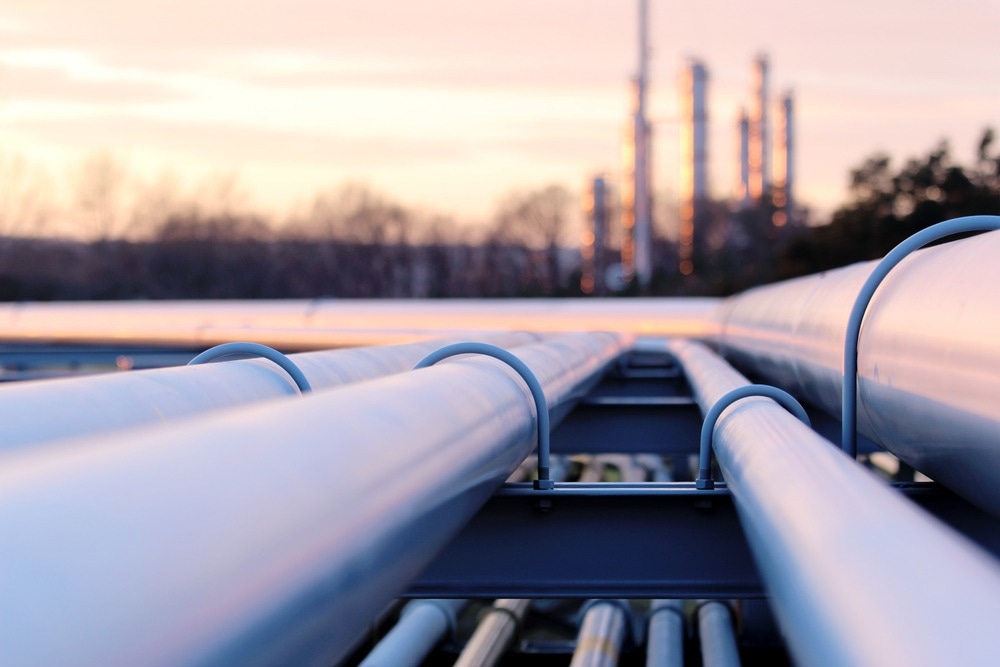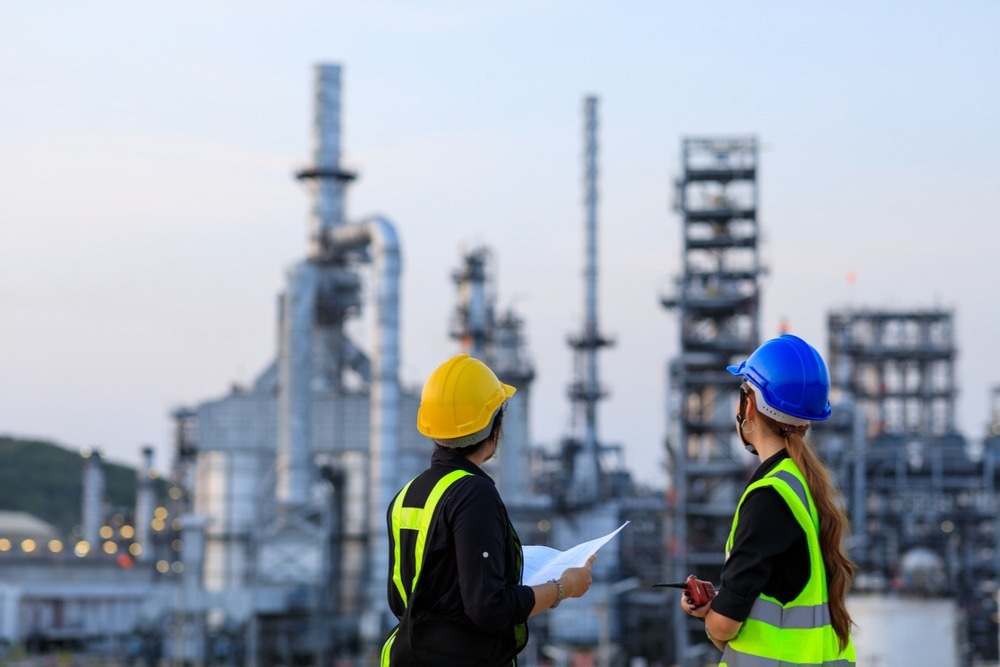The robotics industry continues to be an innovative and exciting space, with new inventions and capabilities emerging every year. The oil and gas industry has been a key adopter of robotic technology, with applications evolving all the time. Here, we look at how robots are used in the oil and gas industry, what the recent trends and developments have been, who the market’s key players are, and how oil and gas robots may evolve in the future.
Application Areas of Oil and Gas Robots
There are many application areas for oil and gas robots, and the number of applications of these robots is growing as the technology advances. Often, oil and gas robots are used to improve the efficiency, safety, and productivity of processes used in the oil and gas industries.
Logistics in the oil and gas industries is an area that is one of the key adopters of robotics. Here, they are used in the form of autonomous robots that are used to enhance warehouse operations. The movement and organization of inventory can greatly benefit from using these robots as overheads can theoretically be reduced, staff shortages can be addressed, and human error can be minimized.
Oil and gas robots are also used in numerous applications in exploration sub-sectors such as offshore drilling and subsea exploration. Here, robots can be used to carry out drilling operations, which minimizes the need to expose human workers to harsh environments. Robots used in this setting can also improve the speed and accuracy of work.

Image Credit: Kodda/Shutterstock.com
In subsea exploration, robots can operate at great depths to carry out inspections on and maintain subsea infrastructure. Robots can also be used for pipeline inspection, checking for leaks, corrosion, and risks to structural integrity. Again, the use of robots in this setting reduces the need to send human workers into harsh environments.
There are also a number of monitoring and surveillance applications within the oil and gas industries that have leveraged robot technology. Robots equipped with cameras and sensors are used for security surveillance in hazardous and remote environments, such as those scoped out for mining and drilling operations.
Similarly, robots are also used in environmental monitoring to collect information regarding environmental conditions and identify and respond to incidents such as spills or leaks of hazardous materials. This is useful to the oil and gas industries when assessing potential new sites or analyzing the environmental impact of a current site.
Robots also have many applications in the oil and gas industries in the field of health and safety. As touched on above, robots are very useful in situations where conditions may be hazardous or dangerous. Using robots in these scenarios reduces the potential risk posed to human workers. Robots are also being increasingly used in emergency situations where they are used to assist in rescue operations or to assess and manage risks.
Hot Topics in Oil and Gas Robots
There has been notable growth in the oil and gas robots market in recent years. Much of this growth has been driven by technological advancements, as well as the demand for cost-saving devices and an increased emphasis on safety. These key drivers of the market are reflected in the recent trends apparent in the industry.
One important current trend is the increased adoption of automation. Generally, this is happening across industries, and the oil and gas industries are no exception. Automation has become a key focus point of the oil and gas industries; this has led to the adoption of robotics for the completion of numerous tasks, including drilling, maintenance, and inspection. Automation has the benefit of reducing error, increasing efficiency, increasing safety, and reducing the reliance on human workers - which can be of great advantage in times of staff shortages.
There has been increased demand recently for robots capable of carrying out inspections and maintenance work. This is largely due to the fact that many jobs in the oil and gas industries pose some risk to workers.
The environments are often hazardous and by sending robots to do inspection and maintenance work in place of humans, such jobs can not only be done efficiently but they can also reduce the risk posed to the human workforce. By enlisting robots to do jobs such as inspection and maintenance, the human workforce can be redeployed to more valuable areas.
New subsea robots have also emerged in recent years. These new robots can safely inspect pipelines on the seafloor, helping to address the accelerating rate of pipeline accidents that can cause significant environmental damage.

Image Credit: H_Sutthichai/Shutterstock.com
Current Global Market of Oil and Gas Robots
The global robots industry as a whole was worth over $52.9 billion in 2021 and is expected to grow rapidly at a CAGR of 29% from 2021 to 2030. The industry is split into two categories: service robots and industrial robots. Oil and gas robots fit into the latter category. The industrial robot sector accounts for most of the revenue of the entire industry. In 2022, it was valued at around $48.5 billion.
In general, it is Asia Pacific that leads the global robotics industry. Key players are global and include Inuktun, ECA Group, National Oilwell Varco, Robotic Drilling Systems, Sky-Futures, Saab Seaeye, ABB, Siemens, Forum Energy Technologies, Subsea 7, KUKA, and Fanuc.
There are also some interesting start-ups that may shape the development of oil and gas robots. Norwegian company Eelume, for example, offers automated underwater vehicles (AUVs) that carry out inspections, maintenance, and repair operations underwater.
Belgian start-up uWare is another company offering advanced AUVs. These robots are being used for a variety of applications, including seafloor surveying, exploration, and infrastructure inspection.
Australian start-up Blueprint Lab has developed robotic arms that can work in hazardous and dangerous environments. The robotic arms allow engineers to perform tasks vital for inspection and maintenance remotely.
Future Directions for Oil and Gas Robots
British company Epiroc recently announced its plans to partner with a robotics and AI team at the Leleå University of Technology and company Algoryx to push the development of autonomous mining. The project will use sensor technologies and a new generation of autonomous machines to push automation capabilities further in the sector.
Collaboration like this will likely play a key role in the future of the oil and gas robotics market. Innovation will likely be pushed by collaboration between companies with complementary expertise.
In the coming years, we will likely see the development of new oil and gas robots for novel applications. It is expected that the drive will continue to improve safety, efficiency, and reduce overheads. The push for establishing moreenvironmentally friendly processes will also influence how the industry develops and robots may be designed to be more capable of preventing environmental contamination caused by the oil and gas industry.
Final Thoughts Oil and Gas Robots
The market for oil and gas robots is growing and evolving. Companies around the world, including start-ups, are pushing the capabilities of oil and gas robots, most often working towards a common goal of improving the safety and efficiency of the industry while reducing costs. In the coming years, we will see the industry continue to grow, with novel applications of oil and gas robots continuing to emerge.
References and Further Reading
Chris Stripes. (2023). Autonomous robot for subsea oil and gas pipeline inspection being developed at UH [online]. University of Houston. Available at: https://uh.edu/news-events/stories/2023/august-2023/08312023-pipeline-robot.php
Industrial Robotics Market Value to Hit US$ 142.8 Billion in 2032, At CAGR 11.4% [online]. Globe Newswire. Available at: https://www.globenewswire.com/en/news-release/2023/03/09/2624175/0/en/Industrial-Robotics-Market-Value-to-Hit-US-142-8-Billion-in-2032-At-CAGR-11-4.html
Robotics in Oil and Gas – Thematic Intelligence [online]. Global Data. Available at: https://www.globaldata.com/store/report/robotics-market-in-oil-and-gas-theme-analysis/
5 Top Robotics Start-ups Impacting the Oil & Gas Industry [online]. StartUs. Available at: https://www.startus-insights.com/innovators-guide/5-top-robotics-startups-impacting-the-oil-gas-industry/
Disclaimer: The views expressed here are those of the author expressed in their private capacity and do not necessarily represent the views of AZoM.com Limited T/A AZoNetwork the owner and operator of this website. This disclaimer forms part of the Terms and conditions of use of this website.